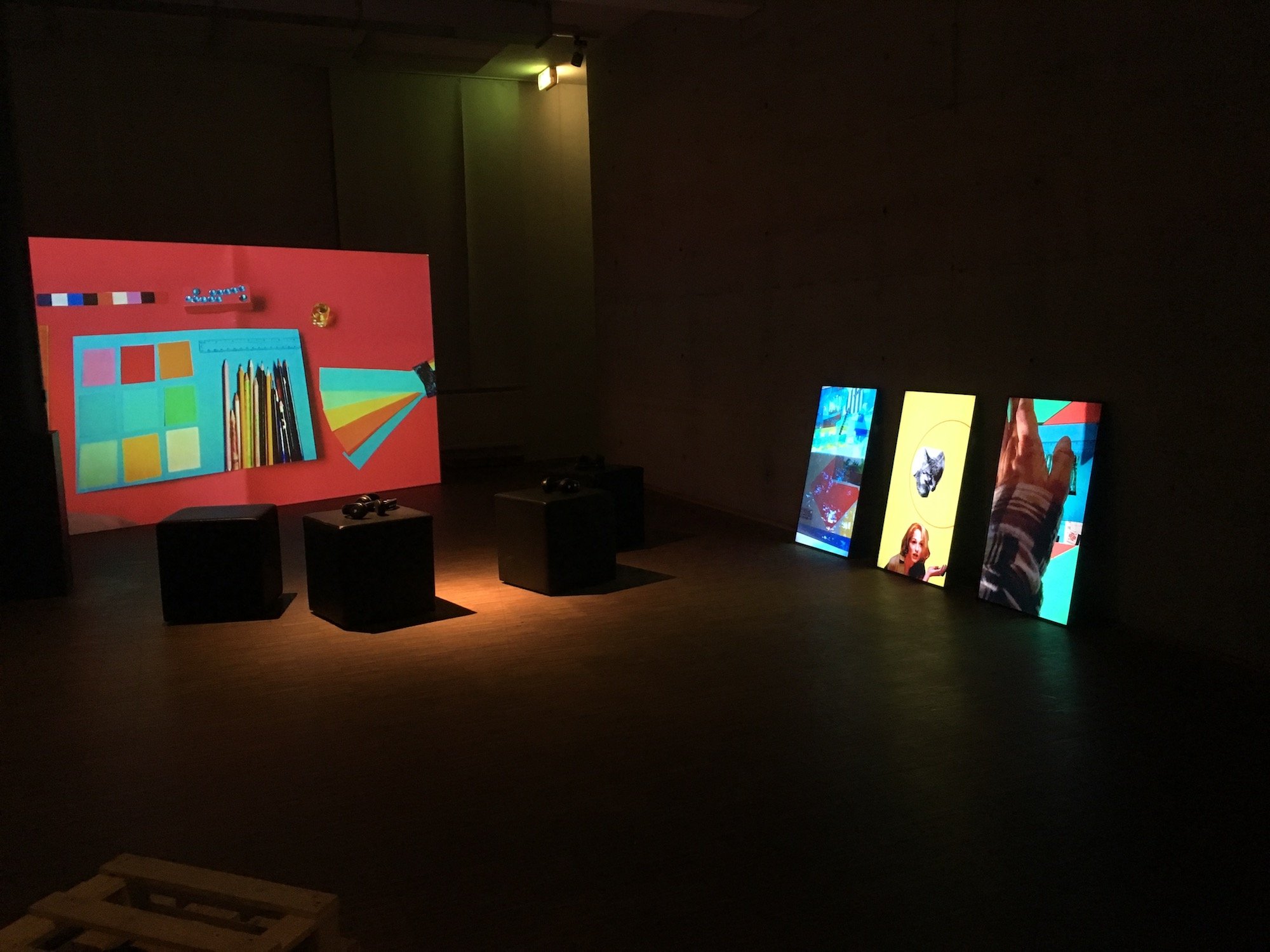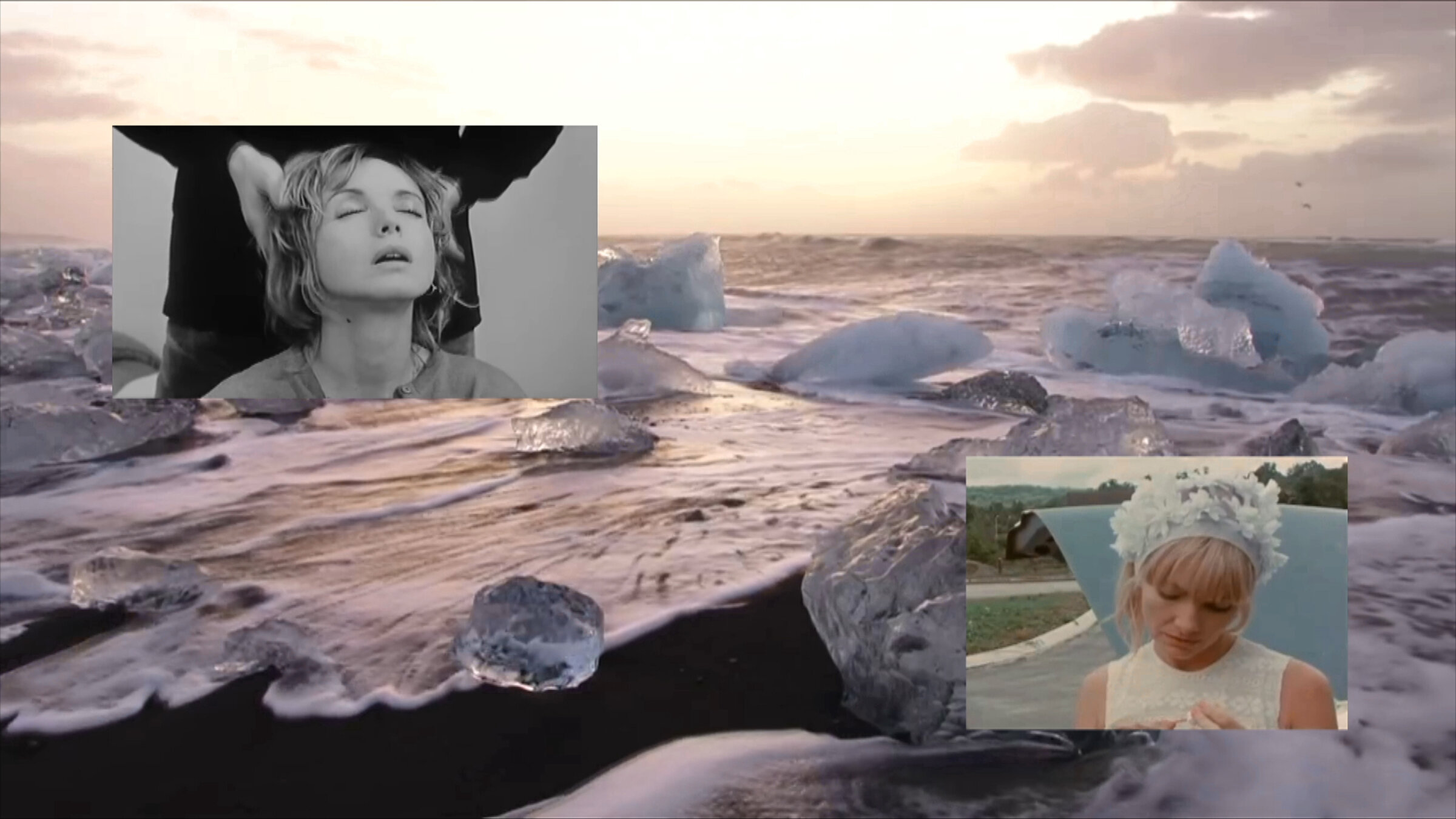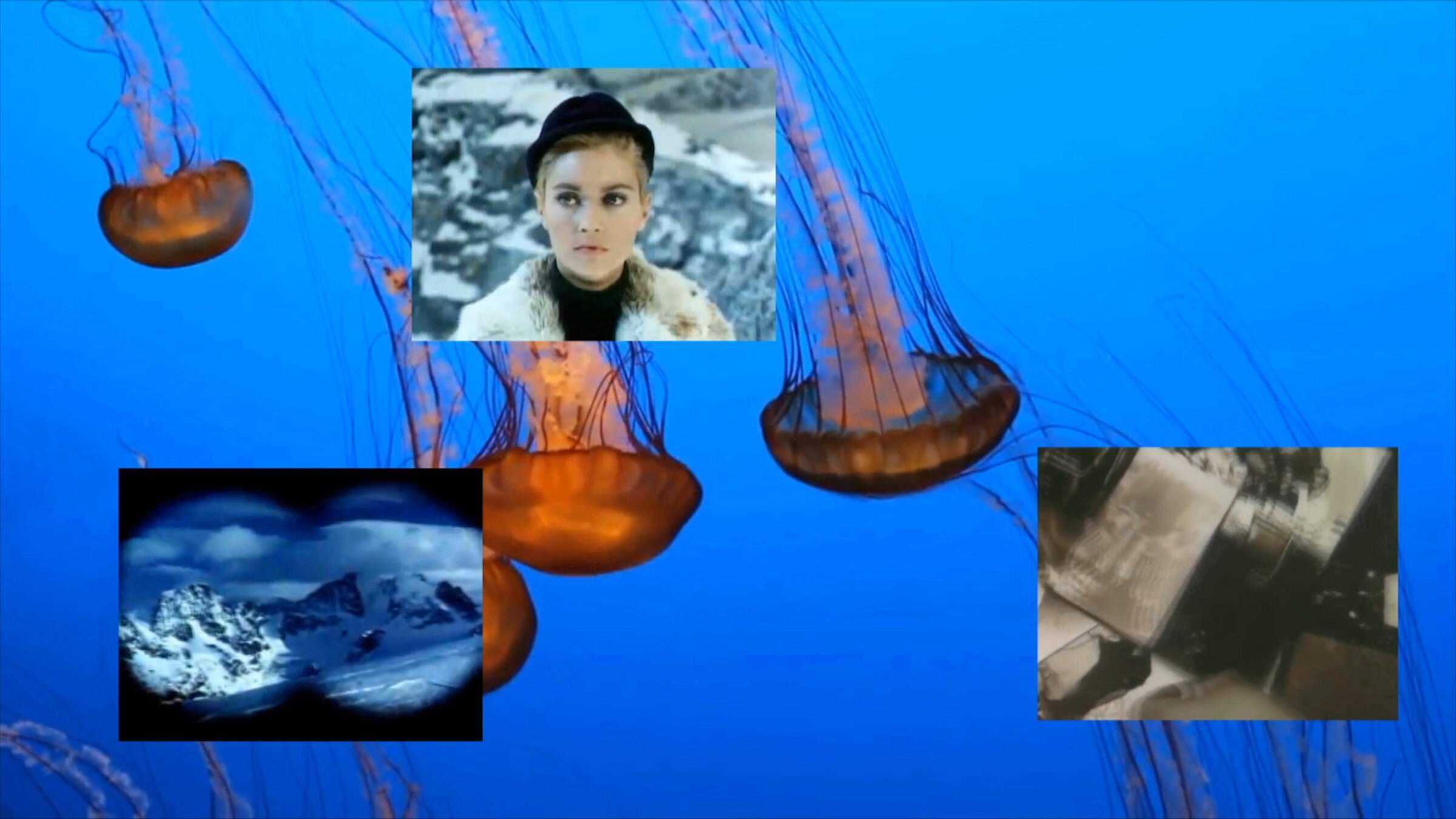Hotel Atlas: Collected Stories and Fragments, multi-video installation, part of the SIGHTINGS Program, Leonard and Bina Ellen Gallery, 2023
This installation combines still and moving images, as well as objects collected over a period of many years from discarded encyclopedias, instruction manuals, beauty guides and digital archives. They are arranged and reconfigured, proposing connections between seemingly unrelated elements from the gestures of screen stars to taxonomies of natural history to writers working at the borders of speech. These configurations ask for constant re-evaluation while creating a universe guided by its own logic.
A Live Reading Performance took place on April 4, 2023 as part of this project. More information here: READING EVENT

installation view, Hotel Atlas: Collected Stories and Fragments, 2023

video, 8min, 2022
Through a whirlwind of images, Today I Did Nothing proposes a hybrid essay narrative that weaves together quotes and ideas using a collection of objects. The work creates a personal archive, repeating its imagery to entice the viewer into its visual universe while at the same time presenting difficult contradictions about desires, impulses and formation through objects.
Screenings: image+nation queer short film festival, antimatter media arts festival
The Decameron is an ongoing project that involves the creation of short videos exploring the possibilities of video collage and documenting my thoughts, dreams, and anxieties until I have made 100.
This project is named The Decameron after the collection of 14-century Italian novellas by Giovanni Boccaccio. Boccaccio created a fictional framing device that brings together tales from 10 people sheltering in a secluded villa outside of Florence to escape the Black Death. Each evening, each member of the party tells one story, except for one day per week for chores and for holy days. In total the group compiles 100 stories, ranging from tragic to comic to erotic.
The Decameron I, 2021, 3 min
Screenings: Oberhausen International Short Film Festival (2022), Dark Room Festival, London, UK (2022), WNDX Festival of Moving Image, Winnipeg (2022), Vidéos des Femmes dans le Parc (2023)
video, 8:36 min, 2020
The Coldest Day of the Year takes place in a future where a cataclysmic event has made tracing a coherent meaning of the past and recounting a narrative of the present impossible. The narrator believes she has seen another being in this destroyed landscape. She attempts to find this figure and recounts a journey that traces the shadows of her presence. Using temporary sets, props and collaged images, The Coldest Day of the Year recounts an attempt to understand an ever shifting horizon and the possibility of dwelling.
Created as part of the LUX Creation and Dissemination Residency, a partnership between Videographe, Main Film, PRIM, and OBORO. Distributed by Videographe.
Selected Screenings: Antimatter Film Festival (2020), Canadian Cultural Center Paris (2021), Place M Tokyo (2021), Festival du film sur l’art (2021)
video, 2018, 62 minutes.
After discovering The Weight of Things on the new releases shelf of the library, I became interested in the writer Marianne Fritz (1948-2007), despite most of her work remaining untranslated. Fritz spent most of her life, over 30 years, working on a cycle of dense and complex novels she called “The Fortress”, consisting of over 10,000 pages -- and still unfinished at the time of her death. Her project is an unusual and astonishing one that challenges the conventions of writing and reading. Whose Language You Don’t Understand, named after Fritz’s novel of the same name, was made out of a period of research and visits to her apartment and archive. The work follows a trajectory of ideas that surround her work and is a cycle of twelve video sections, one for each of the volumes of Fritz’s book. I could not read Fritz’s words directly, but each section is an attempt to engage with her work by building a network around it. These sections are told from the perspective of each member of a team working on a dense, difficult and mysterious project. Each section confronts the philosophical and practical limitations involved in telling a history and explores the limits of language. The project shares a process that is parallel to Fritz’s where writing sustains a reality. Writing, and here, image making, become a movements into an alternative world whose readership/viewership offers radical possibilities.
The research for this project was done in 2017 on a residence from KulturKontakt supported by The Austrian Federal Chancellery.

installation view, Monitoring at Kassel International Documentary Film and Video Festival, November 2019, photo: Eeva Ojanperä/ Kasseler Dokfest

installation view, Monitoring at Kassel International Documentary Film and Video Festival, November 2019, photo: Eeva Ojanperä/ Kasseler Dokfest
Reading Patterns is a video series : TO READ IN A BLACK ROOM, 2017, 7 min 28 sec READING PATTERNS TOGETHER, 8 min 15 sec, 2016 and THIRD READING, 2017, 11 min
In this series, strangers brought together by a mysterious package attempt to unravel their relationship to each other. What follows is a constellation of found footage and a cinematic collection, punctuated by performances and recreations for the camera. Through altering points of view from these two characters’ positions, the narration guides us through these images of repetitive actions, rituals, desires and projections. Engaging with ideas from The Hour of the Star (Clarice Lispector) and The Space of Literature (Maurice Blanchot) the work engages with with the literary experience, but it also brings together a collage of cinematic history. Particularly notable because of their approaches to cinematic presence are Barbara Loden, an actress and director of the 1970 film Wanda and Juliet Berto, an actress in films by Jean-Luc Godard and Jacques Rivette, as well as a director (Neige 1980), Throughout the work we are presented with distinct spaces that want their own definition, but are understood only in parallel with another. It travels repeatedly across two spaces– the interior life of reading and the exterior experience of watching (cinema), the definition of the self and the adulation of the other, and the structures of language that guide our experience and its gaps that escape our understanding.
Presented at LUX in (2017), Dazibao (2017), WRO Biennale (2019)
Installation views. Dazibao. photo: Marilou Crispin. —>



3 videos, 2014
A Spot on the Sun /Smotyn Ar Yr Haul/Une Tache sur le Soleil, is my attempt to recreate experimental filmmaker Chris Marker’s Sans Soleil from memory. Working from fragments, the film weaves together into a narrative essay. It follows patterns of thought through material such as Alfred Hitchcock’s Vertigo, WG Sebald’s The Rings of Saturn, Virginia Woolf’s The Waves, and combines it with personal, footage, images of the Welsh landscape, San Francisco, and of course, Chris Marker’s favourite animal, cats. The text was translated from English to Welsh to French and back to English. In these multiple reiterations, the text spills and transforms. In each version, the film was given an empty timeline and reconstructed in editing from memory of the previous.
The project was made and researched at Aberystwyth Arts Centre, supported by Conseil des arts et des lettres du Québec.
This work was shown at VOX, centre de l’image contemporain in 2015.







